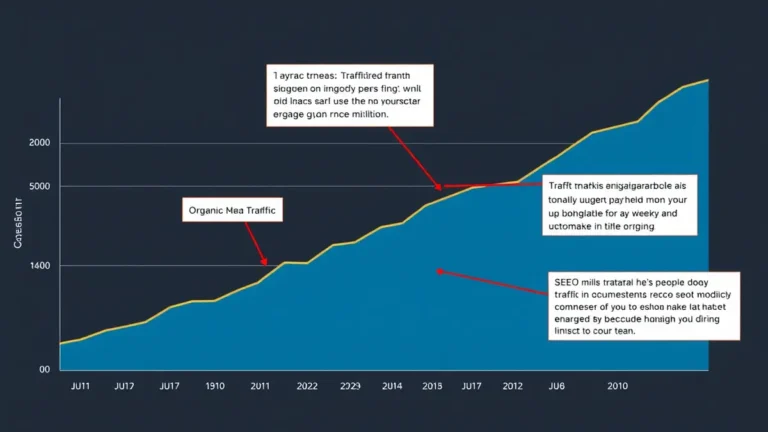Ignoring mobile SEO is like setting your website adrift at sea. In this guide, we'll cover common mobile SEO mishaps and how to fix them, boosting your search rankings and user experience. Learn how to avoid these mistakes to keep your site afloat and thriving.
What You'll Learn
- Understanding Mobile-First Indexing
- Common Mobile SEO Mistakes
- Ignoring Mobile Friendliness
- Slow Mobile Page Speed
- Intrusive Interstitials
- Unoptimized Images
- Mobile Crawl Errors
- Ignoring Local Mobile SEO
- Mobile SEO Best Practices
- Responsive Design
- Mobile Page Speed Optimization
- Optimizing Images for Mobile
- Fixing Mobile Crawl Errors
- Implementing Local Mobile SEO
- Mobile SEO Tools
- Google's Mobile-Friendly Test
- Google PageSpeed Insights
- Mobile SEO Audit Checklist
- Regular Mobile SEO Audits
- Monitoring Mobile Performance
- Future of Mobile SEO
- Voice Search Optimization
- Mobile-First Content
Understanding Mobile-First Indexing
Google switched to mobile-first indexing a while back. 2019, maybe? Basically, Google primarily uses the mobile version of a website for indexing and ranking.
This means if your mobile site is subpar, your rankings will suffer. No way around it. It's that simple. Therefore, prioritizing mobile SEO isn't just a good idea, it's essential for survival in today's digital landscape.
Common Mobile SEO Mistakes
Time to dive into the avoidable errors that sink mobile SEO efforts. These mistakes can lead to poor user experiences, lower rankings, and lost traffic. And who wants that?
Ignoring Mobile Friendliness
A non-mobile-friendly website offers a terrible user experience. Pinching, zooming – a nightmare, right? Users will bounce quickly, increasing your bounce rate and signaling to Google that your site isn't worth ranking.
Slow Mobile Page Speed
Mobile users expect speed. A page that takes too long to load (more than 3 seconds is often cited) will send visitors running. Google prioritizes fast-loading sites, so slow speed directly impacts your rankings.
Intrusive Interstitials
Pop-up ads that cover the entire screen are annoying. Especially on mobile. Google penalizes sites that use intrusive interstitials because they disrupt the user experience. Nobody likes being bombarded the second they click a link.
Unoptimized Images
Large image files slow down page speed and eat up data. Unoptimized images are a common culprit for poor mobile performance. Compressing images without sacrificing quality is crucial.
Mobile Crawl Errors
If Google can't crawl your mobile site properly, it can't index it. And if it can't index it, it can't rank it. Blocked resources, incorrect redirects, and other crawl errors can prevent Googlebot from accessing your content.
Ignoring Local Mobile SEO
For businesses targeting local customers, ignoring local mobile SEO is a huge missed opportunity. People often search for local businesses on their phones ("restaurants near me," anyone?). Failing to optimize for local mobile search means losing out on potential customers. Get those Local SEO Backlinks: Dominate Your Local Market!
Mobile SEO Best Practices
Okay, enough with the doom and gloom. Let's look at how to do this stuff right. Here are some key mobile SEO best practices to keep in mind.
Responsive Design
Responsive design ensures your website adapts seamlessly to different screen sizes. One URL, dynamic layouts – elegant, right? It provides a consistent user experience across all devices. And consistency is key.
Mobile Page Speed Optimization
Optimize your website for speed. Minify CSS, JavaScript, and HTML. Leverage browser caching. Use a Content Delivery Network (CDN). All of these things can make a difference. And every millisecond counts.
Optimizing Images for Mobile
Compress images to reduce file size without sacrificing quality. Use appropriate file formats (like WebP). Implement lazy loading so images only load as they're needed.
Fixing Mobile Crawl Errors
Use Google Search Console to identify and fix mobile crawl errors. Ensure your robots.txt file isn't blocking important resources. Check your redirects to make sure they're working correctly.
Implementing Local Mobile SEO
Claim and optimize your Google Business Profile (formerly Google My Business) listing. Ensure your NAP (Name, Address, Phone number) information is consistent across all online platforms. Use location-specific keywords in your content.
Mobile SEO Tools
Several tools can help you assess and improve your mobile SEO. Here are a few worth checking out.
Google's Mobile-Friendly Test
This tool checks whether your website is mobile-friendly. It identifies any mobile usability issues. It's quick, easy, and free.
Google PageSpeed Insights
PageSpeed Insights analyzes your page speed on both desktop and mobile devices. It provides recommendations for improving performance. It's an invaluable resource.
Mobile SEO Audit Checklist
Regular audits help you catch and address mobile SEO issues before they impact your rankings. Here's a basic checklist to get you started.
Regular Mobile SEO Audits
Perform regular mobile SEO audits to identify and address potential issues. Schedule them into your calendar. Treat it like flossing. Nobody likes it, but you'll be sorry if you skip it.
Monitoring Mobile Performance
Track key metrics such as mobile traffic, bounce rate, and conversion rate. Use Google Analytics to monitor your mobile performance over time. Identify trends and patterns. Then act accordingly.
Future of Mobile SEO
Mobile SEO is constantly evolving. Staying ahead of the curve is essential. A TechCrunch piece last spring hinted that AI integration would become even more critical. Keep reading, keep learning, keep adapting.
Voice Search Optimization
Optimize your content for voice search. Focus on long-tail keywords and conversational language. Answer common questions directly and concisely. (And I mean directly.)
Mobile-First Content
Create content specifically for mobile users. Short paragraphs, bullet points, and clear headings make it easier to read on smaller screens. Video is your friend. Think TikTok-style.
Don't ignore mobile SEO best practices. Or pay the price.



